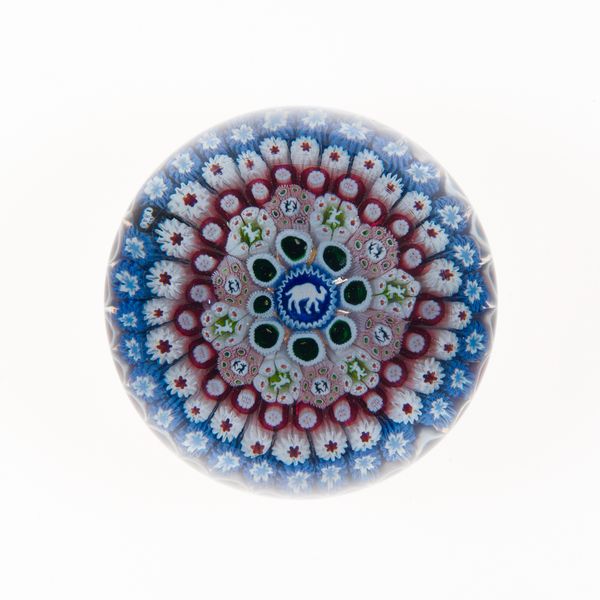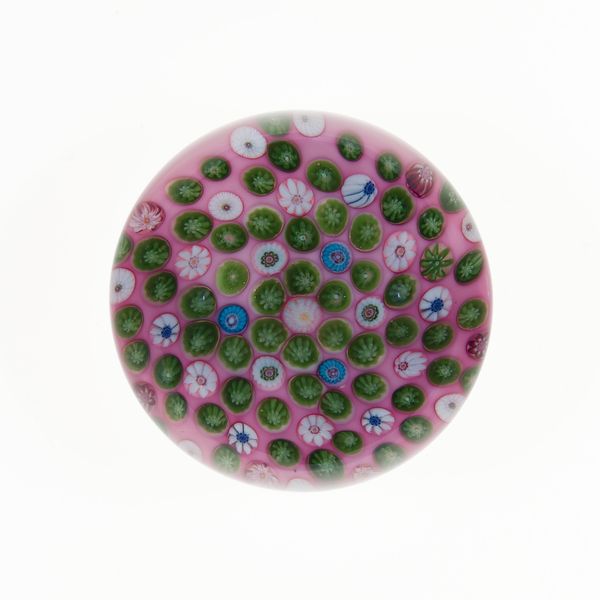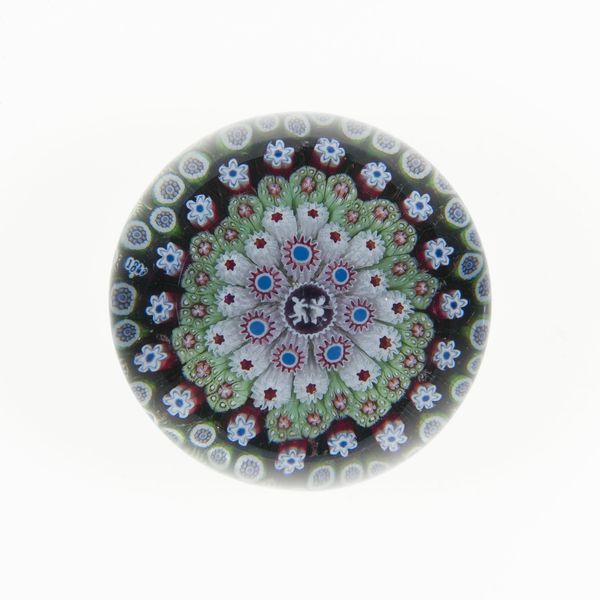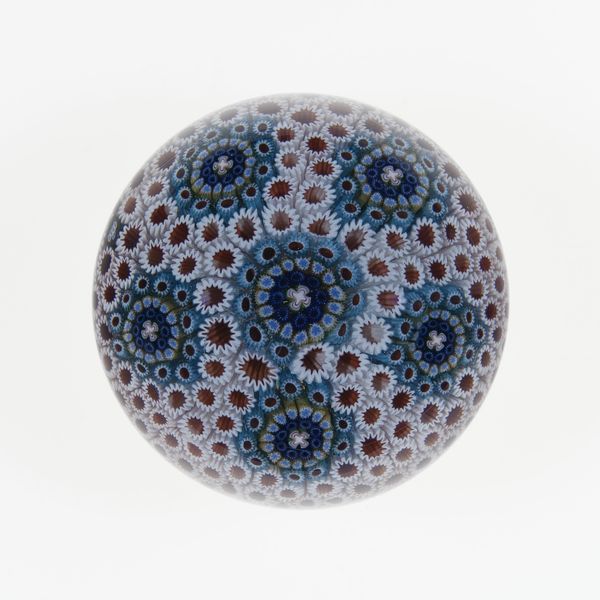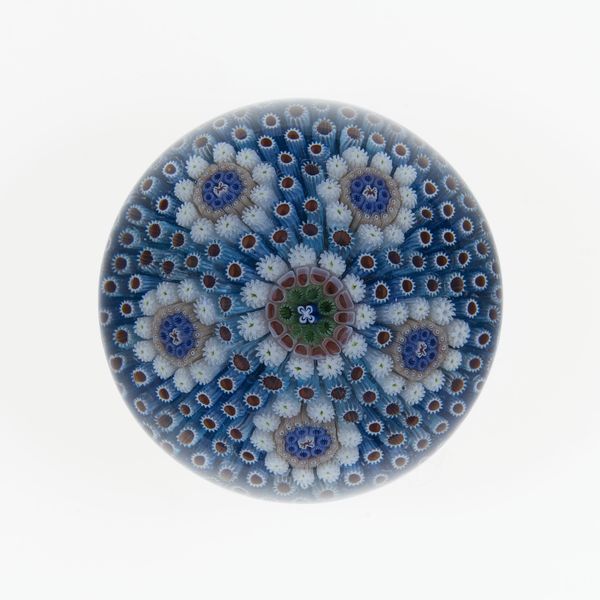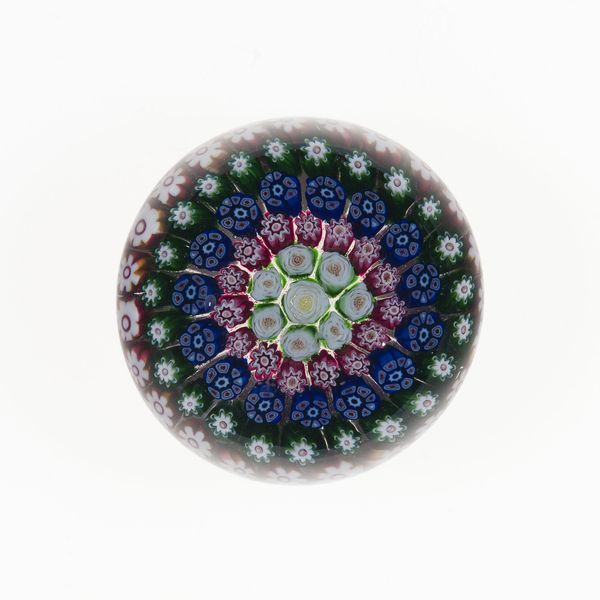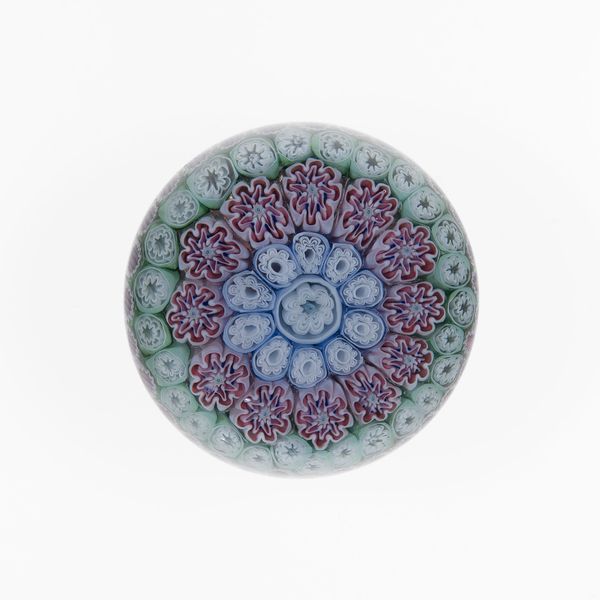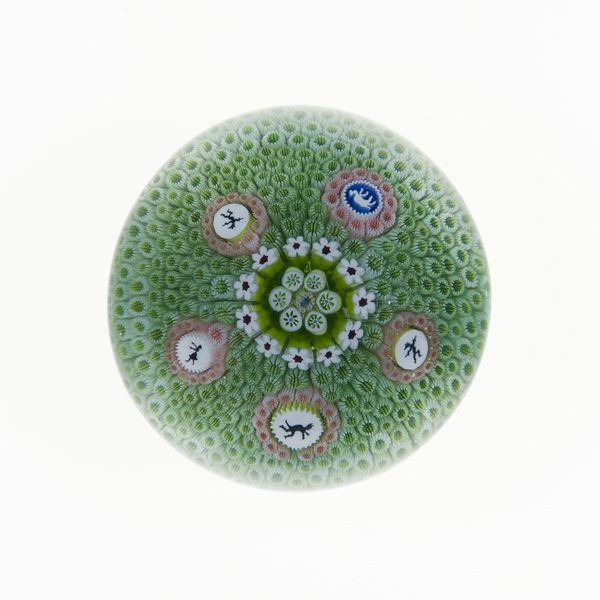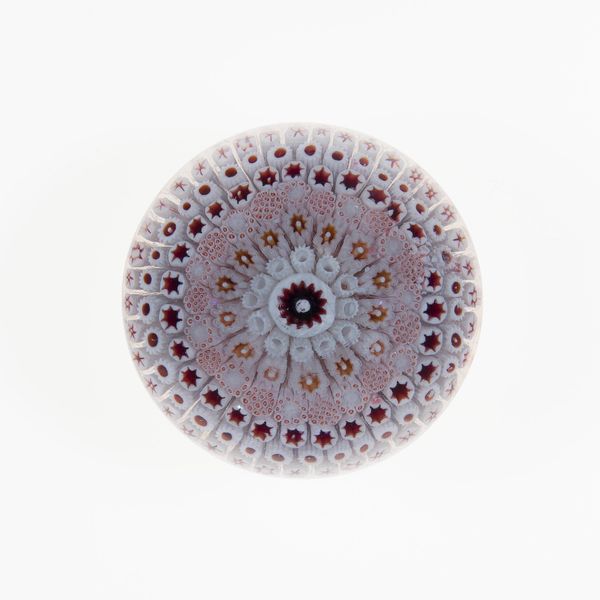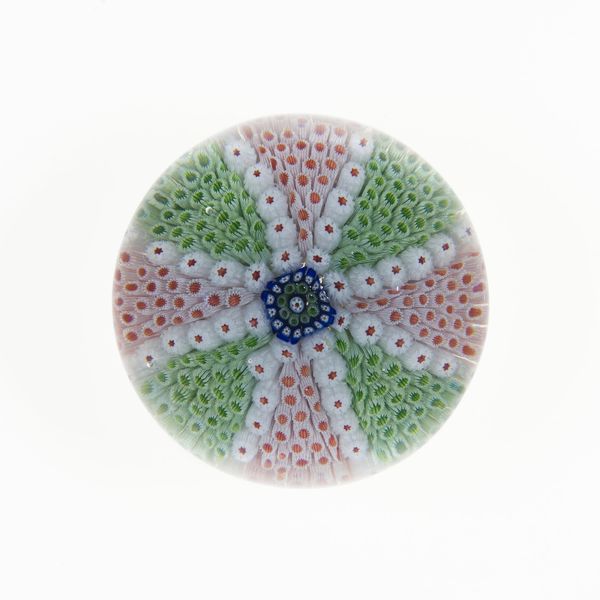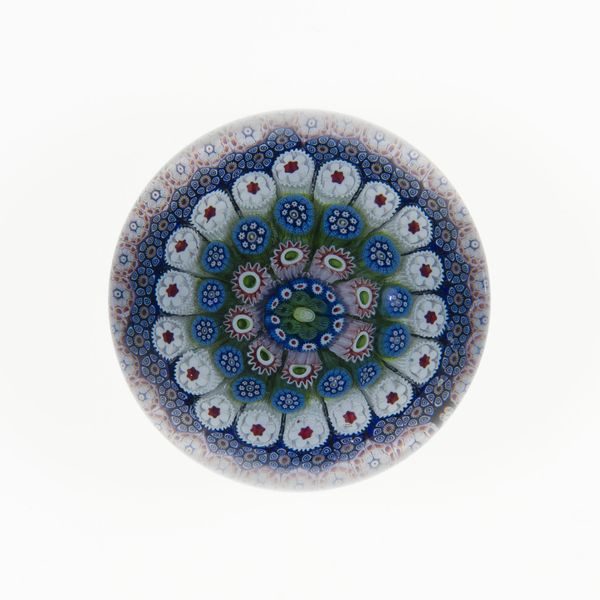
Dimensions: Diam. 7.8 cm (3 1/8 in.)
Copyright: Public Domain
Editor: We’re looking at a "Paperweight," made around the 19th century by the Compagnie de Saint Louis. It’s glass, and the intricate design reminds me of fireworks. What can you tell me about how this kind of decorative art fits into its time? Curator: It's a fantastic example of the Art Nouveau aesthetic finding its way into everyday objects. Think about the socio-economic context. Industrialization had increased production capacity, but there was also a reaction against mass-produced goods. Pieces like this catered to a burgeoning middle class eager for beautifully crafted, yet accessible, items. Editor: So it’s a democratization of art in a way? Because it’s functional and ornamental. Curator: Precisely. It makes you wonder about the function of art itself. Is it just for the elite hanging in galleries? Or can it permeate everyday life, bringing beauty and craftsmanship into the domestic sphere? Consider, too, how something as seemingly simple as a paperweight, when displayed and admired, reinforces the owner’s social standing and refined tastes. The ‘politics of imagery’ aren't limited to grand canvases; they extend to the most unassuming objects. Editor: That’s fascinating. It shifts my perception. I was drawn to the purely visual aspect but didn’t consider how this paperweight participated in defining taste and class in the 19th century. Curator: Exactly! And doesn't it highlight how the museum itself plays a role? By collecting and displaying this, aren't we further solidifying its status and perpetuating these ideas, albeit with new interpretations? Editor: I guess that makes the Art Institute part of the on-going cultural narrative of this small, glass sphere. Thanks for the insightful thoughts. Curator: My pleasure. It's these little gems that make us consider how art’s role is deeply entwined with broader societal forces.
Comments
No comments
Be the first to comment and join the conversation on the ultimate creative platform.
